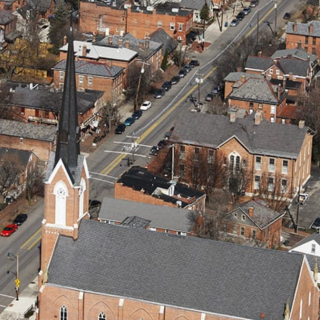Everyone’s a buzz. No, not that kind! Both traditional and social media seem to be buzzing about what’s wrong with the Ohio Medical Marijuana Control Program. Missed deadlines. Onerous restrictions. Exorbitant license fees. Sky high prices. Poor supply. Even illnesses. What gives?
First, the good news. From January to May 19th, 892 pounds of plant material and 6,719 units of processed product were sold, generating 51,278 receipts totaling $7.3 million. Patient purchasers numbered 15,339, representing about half of those eligible.
Sounds OK, right? If removing the sickest from the drug war battlefield was the objective, then success! Despite the poundage and product, no one got arrested, no one went to jail, no one forfeited assets, and no one carried a lifetime scar on their record for possessing, buying or selling.
That said, comparatively, other states evidence Ohio’s short comings.
Passed through an all-Republican state government, HB 523, Ohio’s law, went live on September 8, 2016 and was mandated to be fully operational on the same date in 2018. Regardless, cultivation licenses were issued inNovember 2017, the patient registry came online in December 2018, and both dispensaries and processors opened earlier this year. What’s worse, operational facilities represent only a fraction of those approved by the state … almost three years after the bill’s passage.
In contrast, Governor Tom Wolf (D) signed Pennsylvania’s medical marijuana into law in April 2016, one month before enactment of HB 523. In April 2019, three years later, the Governor’s office reported: 131,000 registered patients, 2.2 million products sold, 46 operating dispensaries and 13 operational grower/processors. Sales over that time frame? $132 million!
While thirty-three states like Ohio and Pennsylvania operate whole plant medical cannabis laws, fourteen states restrict access to “CBD only” and three prohibit the plant altogether.
What accounts for the differences in these programs? Population? Path to passage? Political party?
Population-wise, Ohio and Pennsylvania rank among the top ten U.S. states, a position where only Texas, Georgia and North Carolina lack whole plant laws. Of the bottom ten states, just Wyoming and South Dakota carry that moniker. Size alone does not appear to inhibit enactment of cannabis law.
In terms of path, ballot issues begat medical marijuana in 1996 with voter approval of California’s Proposition 215. It spawned fourteen subsequent state initiatives that most often come to the fore in Republican dominated states. Still, the majority of state programs emanate from legislation enacted by Democratic or split state governments. Ballot win to dispensary opening in Arkansas and North Dakota took two and a half years; bill passage to store opening spanned almost three years in legislatively driven Ohio. Ballot issue v legislation fails to correlate with program success or failure.
What does? Political party. Indeed, that’s the common denominator among all seventeen states without whole plant laws. Further, the slow progress of fledgling programs reveals a party-driven pattern: miswritten/rewritten bills (Louisiana), multiple ballot issues (Florida) and a governor’s recent veto (Iowa). Long-standing, successful programs, whether by ballot issue or legislation, belong to Democratic states like Oregon, Rhode Island and Delaware.
It should be noted that 96% of Democrats and 86% of Republicans support the use of cannabis for medical purposes, so, politically, it’s unclear why the “Party of Lincoln” opts for bans, slow go and outright failure.
But failure it is. Some Ohio examples:
- Missed deadlines: It bears repeating: HB 523 mandated a fully operational medical cannabis program in September 2018. It’s 2019. Fewer than half of Ohio’s cultivators, processors or dispensaries are operational.
- Onerous restrictions: From logo to signage, format, size, content, medium and length of distribution, all materials must – for a fee – be approved by the board of pharmacy.
- Exorbitant license fees: Deemed the most expensive in the country, the non-refundable fees for each Level 1 Cultivator are $20,000 for the application, $180,000 for the initial license and $200,000 for an annual renewal.
- Sky High Prices. The price per ounce of flower in Ohio eclipses $450. The comparable price of bud inPennsylvania ranges between $200 and $400. Ohio’s street price (read, illegal) hovers around $320. Why the expense? Exorbitant license fees and limited licensees pile onto cash-only banking that forces dispensaries into buildouts matching Fort Knox.
- Poor supply: With just two of thirty-nine processors operational, the only available product has been flower. Further, misprinted labeling caused some oils to be pulled.
- Illness. Hard to believe, but some Ohio patients are reporting illness after consuming products purchased from Ohio dispensaries. Symptoms include migraines, nausea and even high blood pressure. Some cited the rare condition Cannabinoid Hyperemesis Syndrome, while others termed it “Pesticide Hyperemesis Syndrome,” pointing to insecticides like AzaMax (azadirachtin). One victim requested the cultivator’s pesticide report only to be denied this “proprietary information.”
So, other than failure, what one word best describes what’s wrong with Ohio’s medical marijuana program? Republicans.



